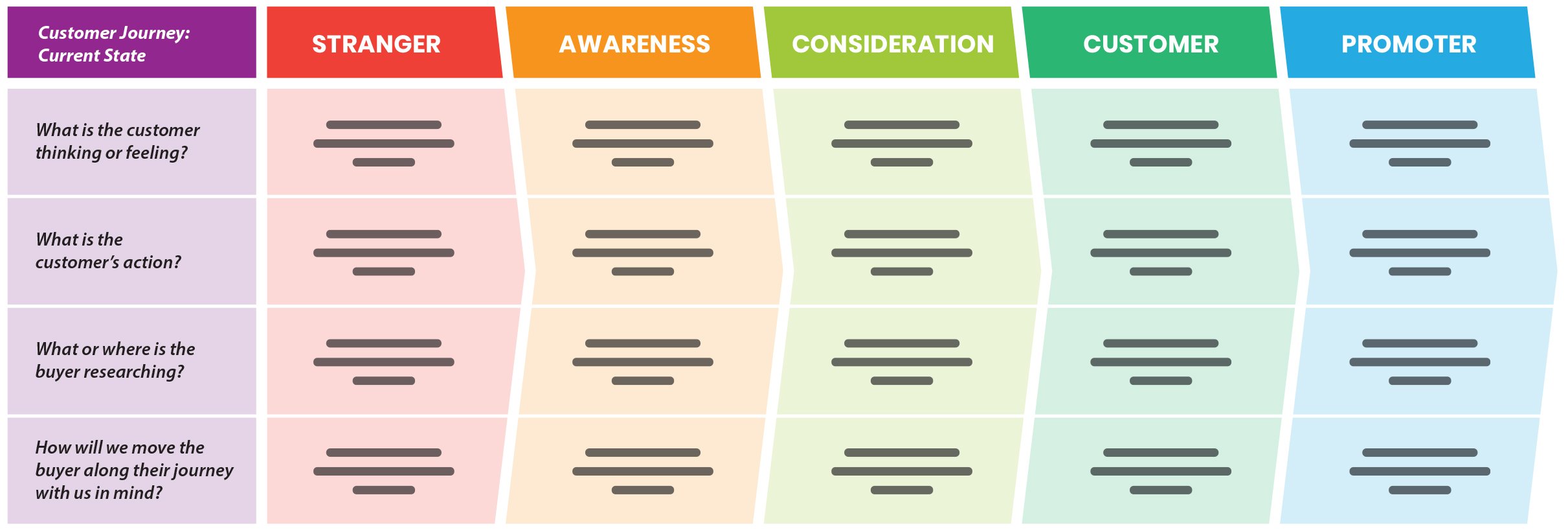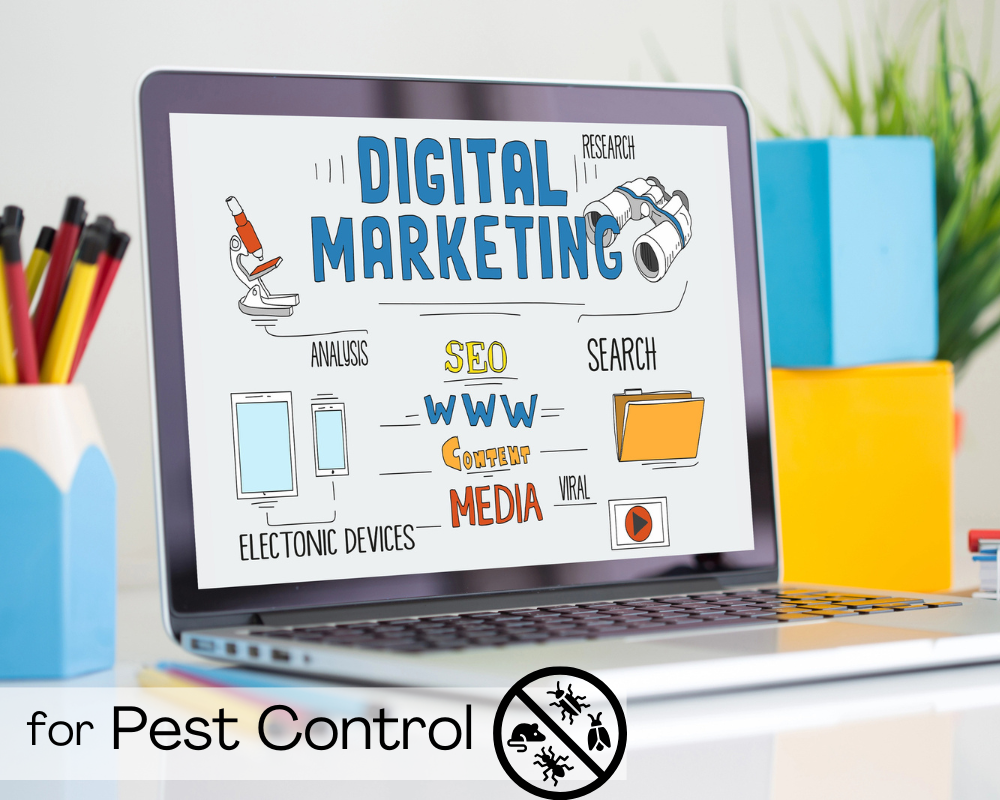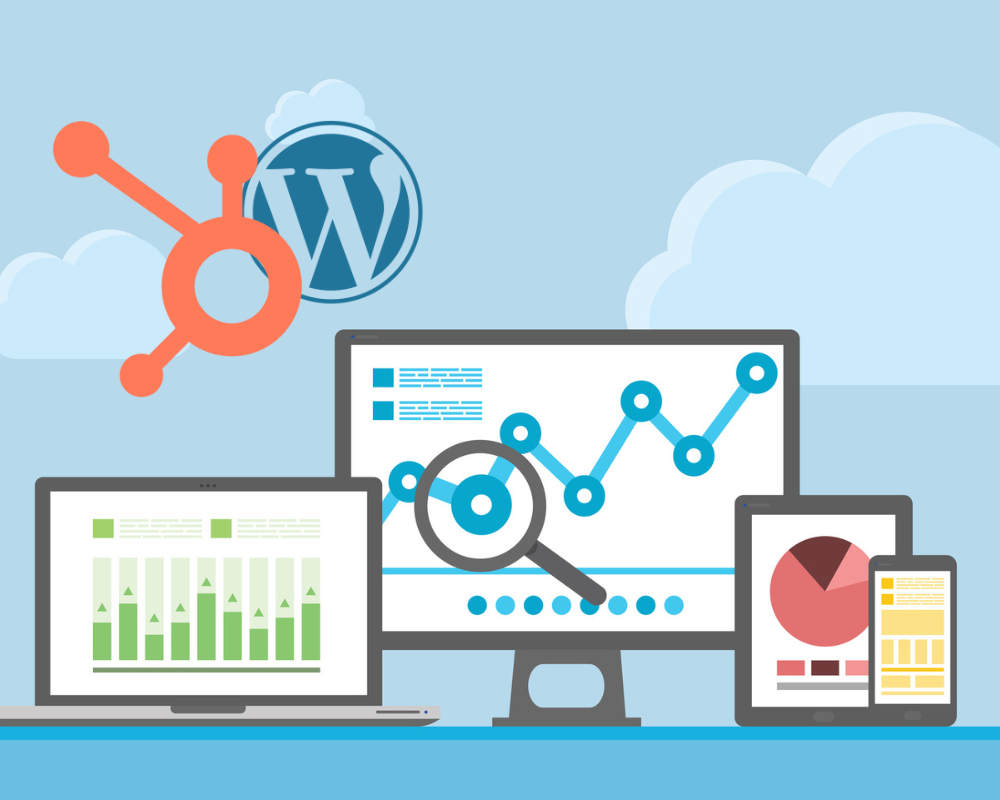Inbound Marketing Strategy: Mapping the Customer Journey

Today's buyer is more informed than ever before, thanks to the vast amount of information available at their fingertips. Because of this, the balance of power has shifted from the sales rep to the buyer in most sales conversations. This is why pushy sales tactics are no longer effective the way they used to be.
Instead, to be successful in sales in today's day and age, sales reps must adapt their mindset from selling to helping. And the best way to start this process is becoming intimately familiar with who the buyer is and the journey they take on their path to purchase: The buyer's journey.
What is the buyer's journey?
The buyer’s journey is broken down into three stages: awareness, consideration, and decision. All three are essential to understanding how prospects eventually become buyers.
The buyer's journey describes a buyer's path to purchase. In other words, buyers don't wake up and decide to buy on a whim. They go through a process to become aware of, consider and evaluate, and decide to purchase a new product or service.
By understanding the buyer's journey, the pains and problems they experience along that journey, and the influencing factors that shape their thinking, sales reps can better empathize with the buyer and position their product or service along that path. So let's dig in a little further.
What are the three stages of the buyer's journey?
The buyer's journey can be broken down into three steps or "stages" that describe how they advance along their path to purchase: the awareness stage, the consideration stage, and the decision stage.
Here's how to conceptualize each stage:
- Awareness Stage: The buyer becomes aware that they have a problem.
- Consideration Stage: The buyer defines their problem and considers options to solve it.
- Decision Stage: The buyer evaluates and decides on the right provider to administer the solution.
Buyer Journey Mapping

Buyer journey mapping is the process of visualizing how a customer interacts with a business by mapping out the actions they take to achieve a goal. Customer journey mapping outlines key events, customer motivations, and areas of friction within their experience. Then, this information is combined into a comprehensive visual that describes a customer’s typical experience with your business.
By understanding this relationship, you can structure your touchpoints to create the most effective and efficient process for your customers. A customer journey map visualizes the current process customers take, from the first to final touchpoint, to see if they’re currently reaching their goals and, if not, how they can.
A Buyer Journey Map will identify your clients overall buying process, actions, emotions, pain points and solutions. This can help you to identify how to engage with them throughout every stage of their buying process.

Now that the overall journey has been defined, let's take a look at each stage in greater detail, from the buyer's perspective:
What is the buyer doing during the awareness stage?
The buyer is experiencing a problem or symptoms of a pain, and their goal is to alleviate it. They may be looking for informational resources to more clearly understand, frame, and give a name to their problem.
- Example: "Why do my feet hurt all the time?"
What is the buyer doing the consideration stage?
The buyer will have clearly defined and given a name to their problem, and they are committed to researching and understanding all of the available approaches and/or methods to solving the defined problem or opportunity.
- Example: "How do you treat arch pain?"
What is the buyer doing during the decision stage?
The buyer has decided on their solution strategy, method, or approach. Their goal now is to compile a list of available vendors, make a short list, and ultimately make a final purchase decision.
- Example: "Where can I get custom orthotics? How much will they cost?"
If you don't have an intimate understanding of your buyers, it may be difficult to map out the buyer's journey in a way that will be helpful from a sales perspective. In this case, be sure to conduct a few interviews with customers, prospects, and other salespeople at your company to get a sense of the buying journey.
Tailoring Your Sales Process to the Buyer's Journey
With all of this in mind, buyers don't want to be prospected, or demoed, or closed when they're not ready. These steps add zero value, from their perspective, when offered at the wrong time.
However, where a sales rep can shine is in the instances when buyers are looking for additional information about your product that can't be found online.
Awareness Stage
Buyers are identifying the challenge or opportunity they want to pursue. They are also deciding whether or not the goal or challenge should be a priority.
WHAT WE SHOULD BE ASKING
- How do buyers describe their goals or challenges in the context of our business?
- How are our buyers educating themselves on these goals or challenges?
- What are the consequences of inaction by the buyer?
- Are there common misconceptions buyers have about addressing the goal or challenge?
- How do buyers decide whether the goal or challenge should be prioritized?
ACTIONS WE SHOULD BE TAKING
- Creating informational, not salesy, sales collateral that educates them along their path to purchase.
- Providing them with resources to help them define the problem.
- Helping, helping, helping.
Consideration Stage
Buyers have clearly defined the goal or challenge and have committed to addressing it. They are now evaluating different approaches or methods available to pursue the goal or solve their challenge.
WHAT WE SHOULD BE ASKING
- What categories of solutions do buyers investigate?
- How do buyers educate themselves on the various categories?
- How do buyers perceive the pros and cons of each category?
- How do buyers decide which category is right for them?
ACTIONS WE SHOULD BE TAKING
- Understanding exactly how our product or service solves their problem compared to both our direct and indirect competitors.
- Considering how our direct and indirect competitors are showing up in the marketplace and how they influence perception.
- Providing the buyer with resources to help them determine the solution that's right for them.
Decision Stage
Buyers have already decided on a solution category and are now evaluating providers. For example, they may have written a pro/con list of specific offerings to decide on the one that best meets their needs.
WHAT WE SHOULD BE ASKING
- What criteria do buyers use to evaluate the available offerings?
- When buyers investigate our company's offering, what do they like about it compared to alternatives? What concerns do they have with it?
- Who needs to be involved in the decision? For each person involved, how does their perspective on the decision differ?
- Do buyers have expectations around trying the offering before they purchase it?
- Outside of purchasing, do buyers need to make additional preparations, such as implementation plans or training strategies?
ACTIONS WE SHOULD BE TAKING
- Understanding what objections they might have prior to the sales process so that you can adequately handle them.
- Ensuring that you have a unique selling proposition that provides value to the buyer and sets you apart from competitors.
Some of these considerations may fall more under the marketing umbrella than the sales umbrella, but ultimately the answers to these questions will provide a robust foundation for your buyer's journey.
The process of getting to know how your buyers buy is invaluable as you create or refine your sales process. You'll be better able to empathize with prospects, handle objections, and provide the right information at the right time, helping you close more deals and win more business.
Create content that's relevant to your audience at
every stage.
Creating relevant, valuable content is a major tenet of inbound marketing. The content you're creating should be in line with the goals and challenges of specific segments of your audience.
It all boils down to creating the right content for the right people at the right time. And the best way to do that? Through mapping out your content according to buyer persona and lifecycle stage.







